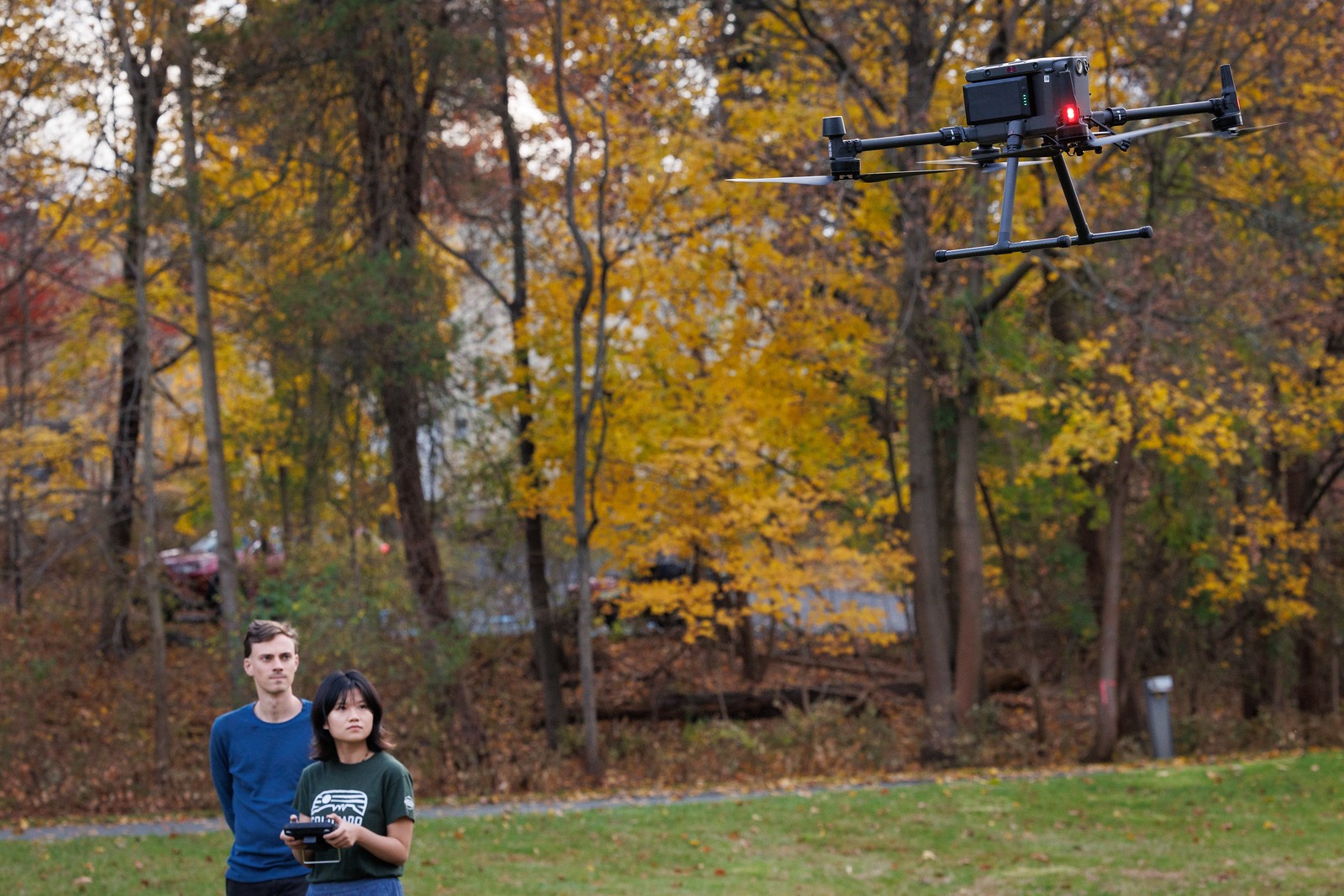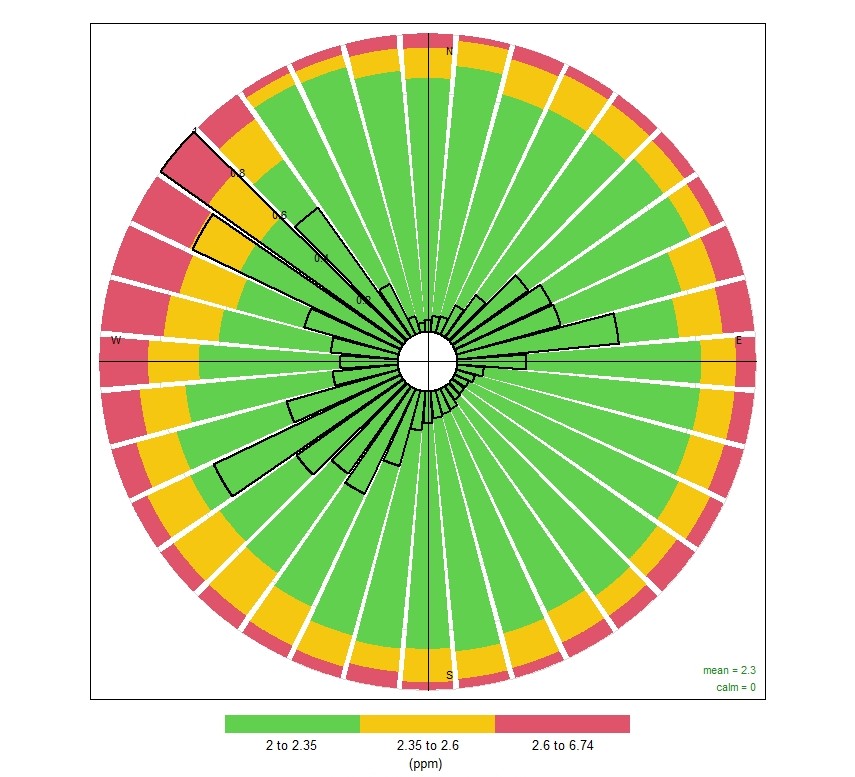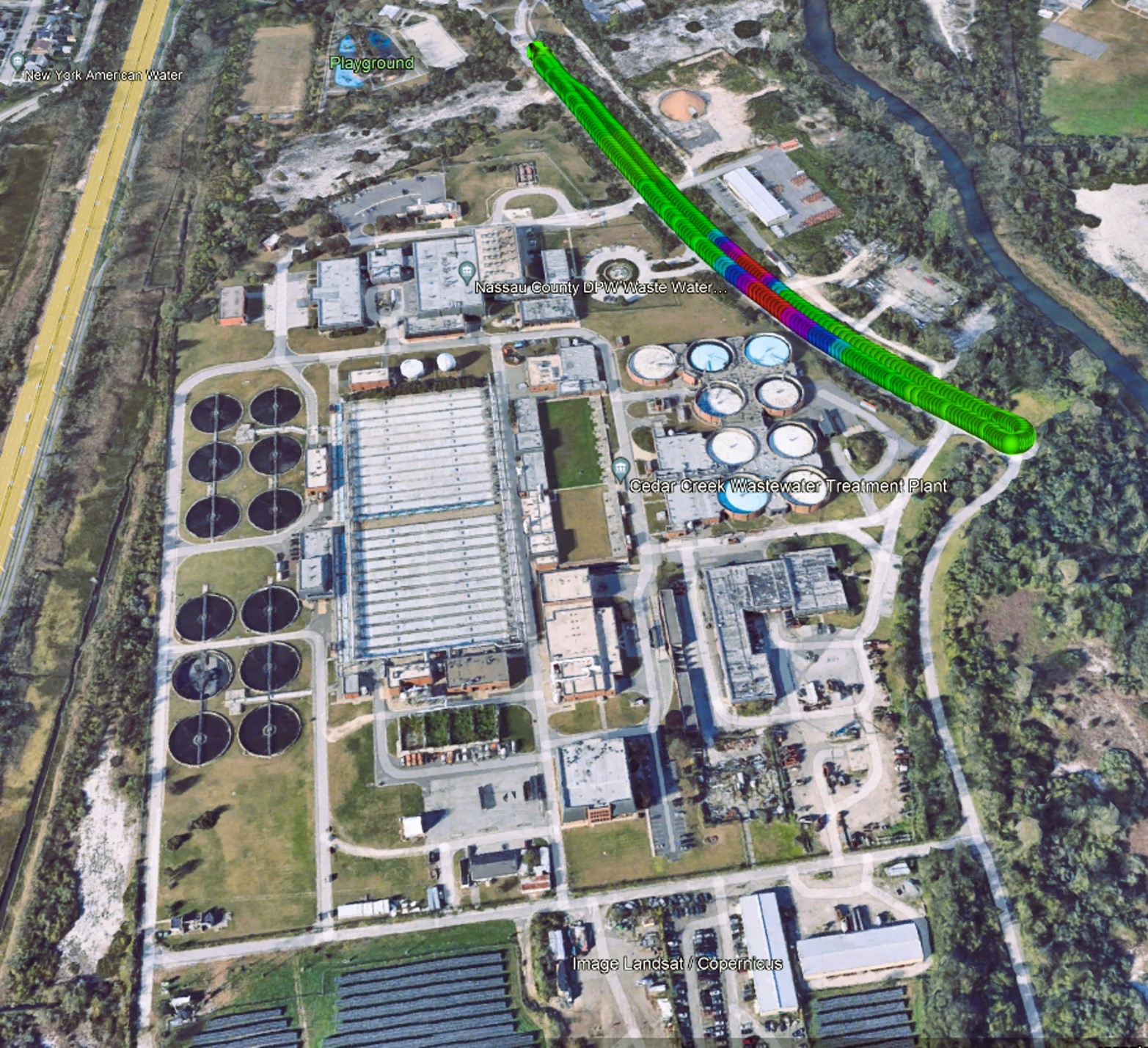Our group measures methane and carbon dioxide concentrations at four locations around New York City.
Image Carousel with 4 slides
A carousel is a rotating set of images. Use the previous and next buttons to change the displayed slide
-
Slide 1: Andrew and Yuwei measure methane using sensors on a drone.
-
Slide 2: Andrew, Yuwei, and Roisin prepare the mobile vehicle for deployment.
-
Slide 3: Wind rose of methane for ASRC site in Harlem.
-
Slide 4: Google Earth image showing a plume of methane coming from Cedar Creek Wastewater Treatment Plant on Long Island.

Andrew and Yuwei measure methane using sensors on a drone.

Andrew, Yuwei, and Roisin prepare the mobile vehicle for deployment.

Wind rose of methane for ASRC site in Harlem.

Google Earth image showing a plume of methane coming from Cedar Creek Wastewater Treatment Plant on Long Island.
Methane emissions can be characterized as biogenic or thermogenic, and separated between the two based on the co-emission of other species, namely ethane, or by their distinct isotopic signatures. We measure a suite of gases (CH4/CO2/CO/C2H6/N2O/H2O) and occasionally methane isotopes in order to distinguish sources of methane, both at street-level from mobile sampling and at rooftop level from tower measurements.
Major biogenic sources of methane in the NYC area include landfills, wastewater treatment, and sewers, while the main thermogenic source is natural gas. New York City recently passed a ban on natural gas hookups in new buildings, starting in 2027. In order to evaluate the success of this and other efforts to reduce natural gas use, it is imperative to have an understanding of the starting point. Unfortunately, emissions inventories of NYC and other New England Cities often underestimate observed methane enhancements. With a mix of targeting point-source emissions and tower measurements capturing influence from large sections of the city, we aim to improve our understanding of methane emissions in NYC.
We measure at two sites (Lamont-Doherty Earth Observatory and Rutgers University) that represent sites in the suburban areas and background measurements for air coming into the city, while the other two (at CUNY ASRC and at Mineola as part of the FROG-NY campaign) measure the city itself and the outflow from the city. We then use inverse modeling techniques to evaluate inventories for methane and carbon dioxide emissions across NYC. We also have done numerous mobile surveys of NYC streets, including three deployments with the SUNY Albany mobile van targeting point sources in NYC and upstate New York.